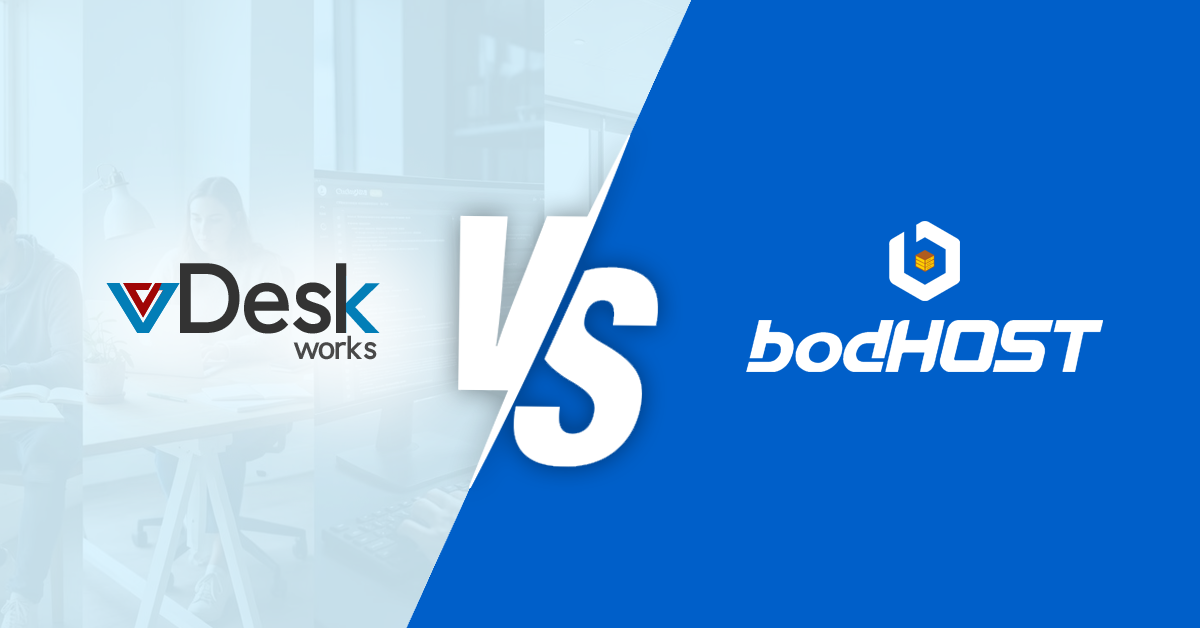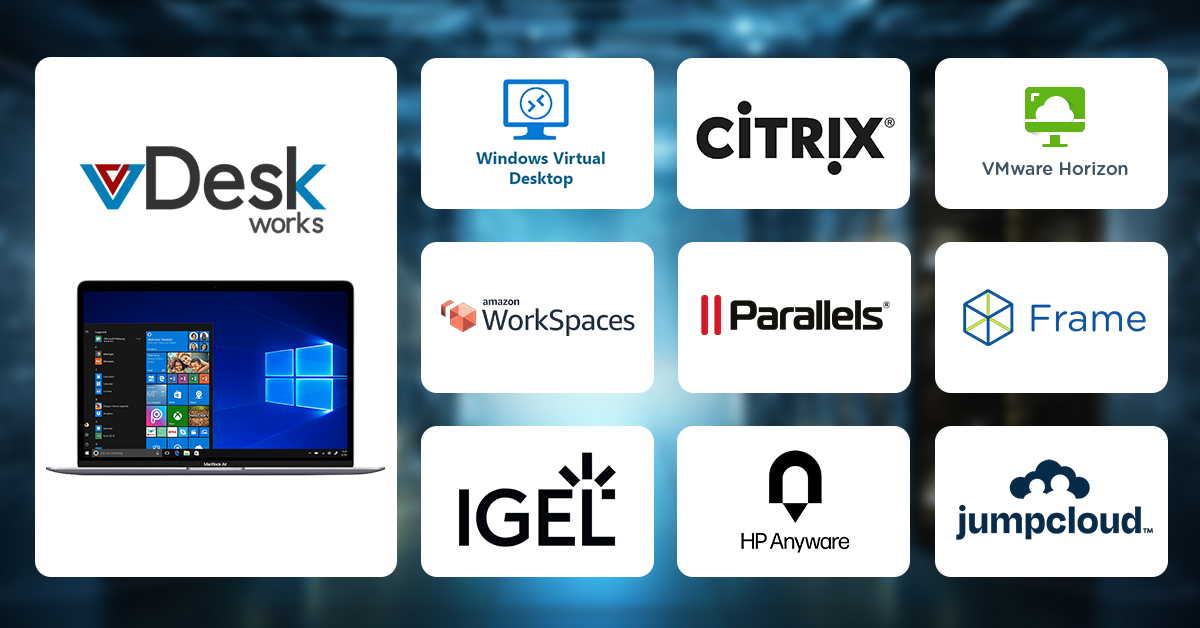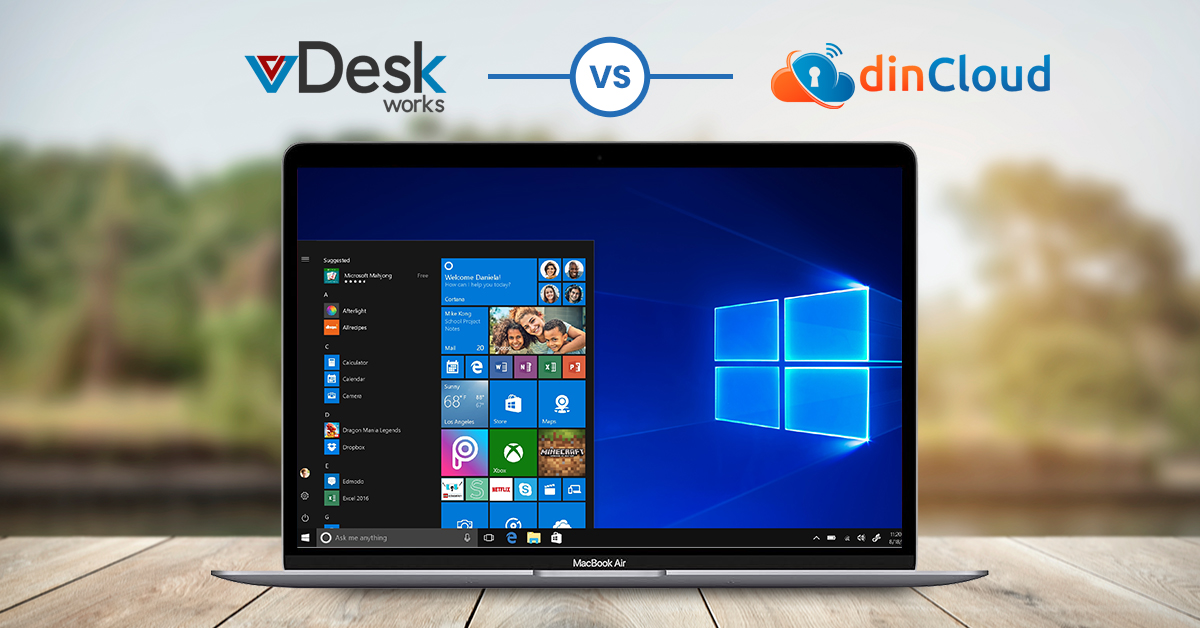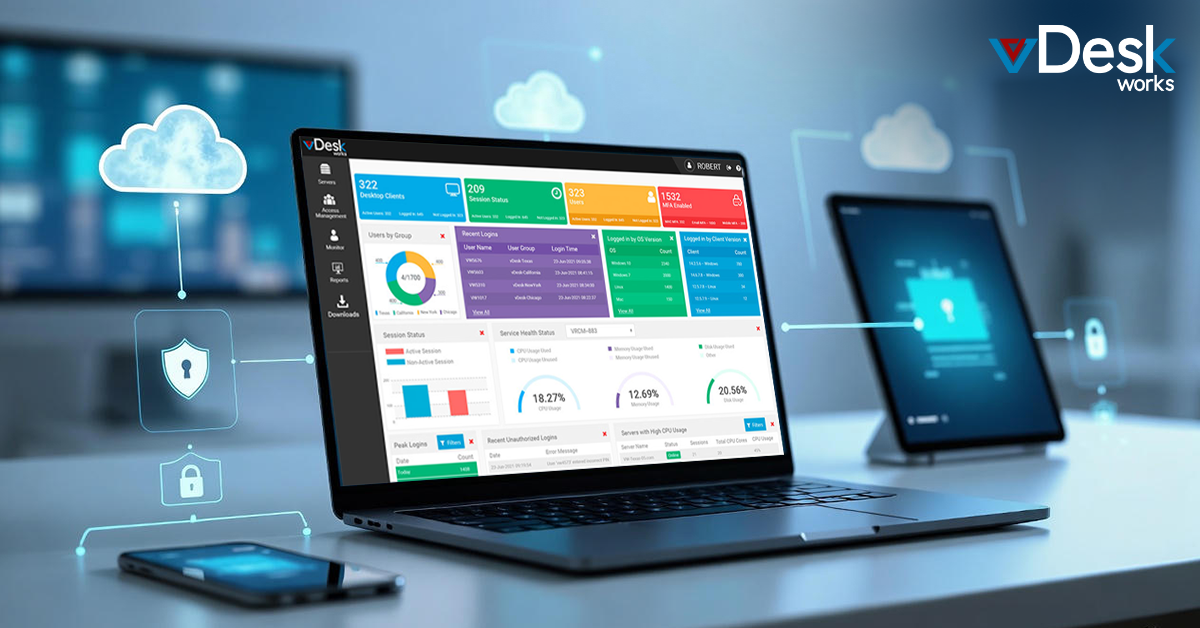Virtual desktop technologies have evolved as companies look for solutions to better maintain complicated traditional desktop equipment, providing users with secure access to programs and corporate files from anywhere. Due to the COVID-19 pandemic, many companies consider permanent remote employment making virtual PCs highly desirable to support business needs. VDI and DaaS are standard virtualization technologies used for remote access and can overcome many of the restrictions of office-based computing. Trusted global providers of VDI and DaaS like vDesk.works, Citrix, VMware, and IBM, provide state-of-the-art virtualization solutions guaranteed to improve remote workforce productivity and secure all personal and corporate data.
What is VDI?
Traditionally, the only way to run a virtual desktop was via virtual desktop infrastructure (VDI). Desktops can be delivered using VDI technology by using Virtual Machines that are either on-premises or in the cloud. These virtual desktop solutions are provided to users and maintained by a central server.
Since VDIs are located in a single location, the IT department is in charge of them. As a result, everything from the hardware to the software to the deployment is handled in-house. The IT department has complete control, and even if the internet goes down, work can still be done. There is very little latency and internal management of hardware and software is handy. However, VDI systems necessitate the hiring of dedicated IT employees to deal with any problems. If something goes wrong, it must be addressed in-house, which can be expensive if there are hardware or software failures.
What is DaaS?
Virtual desktops are housed on managed cloud infrastructure and remotely provided to user clients in a DaaS service. A monthly fee is charged for these services, which can be used with other cloud providers' offerings. In DaaS, the desktop infrastructure (VDI) is outsourced to a third party and managed by that company instead of being in-house. Informally referred to as cloud based desktop services, desktop as a Service (DaaS) makes desktop virtualization available as a cloud service, complete with all necessary desktop software.
Virtual Desktop Infrastructure (VDI) vs. Desktop as a Service (DaaS)
In the simplest terms, DaaS is a cloud-hosted virtual desktop from a vendor like Amazon, Microsoft, or Google. A company will not have to worry about hardware breakdowns or maintenance while using DaaS solutions because the provider manages all hardware. Subscription-based DaaS solutions charge by the seat. It may be tempting to hurry into a DaaS business model to clear the schedules of the data center and IT staff.
Cloud-hosted desktops such as VDI and DaaS fulfill similar purposes. However, there are a few distinctions to keep in mind before deciding on the best solution for a company. VDI and DaaS offer their respective advantages and obstacles, even though both cases have the same outcome. Below is a side-by-by-side comparison of the two alternatives to show how they differ.
Multi-tenant vs. single-tenant buildings:
When deploying VDI, resources are allocated to a single organization or user in a single-tenant approach. Control over the configuration and allocation of resources is given to the company. It also reduces the likelihood that the resource demands of other users would impact a company's own deployment.
Most DaaS providers, on the other hand, utilize multi-tenant architectures. Under this model, businesses share servers or data centers. Each client's services are private and only accessible by that organization. Still, all available resources are shared in real-time, meaning that if a service is hacked, it may impact other businesses' resource utilization or security.
Platform
The company is in charge of all installation, maintenance, and management in VDI deployments. On-premises installations necessitate the upkeep and storage of both physical and virtual machines. Hosting installations in a private cloud would leave the provider to take care of infrastructure maintenance and management.
When using DaaS, infrastructure is taken care of, so there is no need to worry about it. The service provider handles hardware monitoring, upgrades, availability, and troubleshooting, so a company will also have access to the provider's technical help if they use DaaS.
Cost
Capital expenditures (CapEx) are required for VDI implementations, particularly when servers and data centers need to be purchased or upgraded. In contrast, corporations can begin paying off technical debt and no longer be concerned about recurring subscription fees once the hardware has been purchased and configured. With known growth and resource requirements, enterprise-grade companies can save money by using Desktop as a service instead of buying it.
Comparatively, the cost of deploying a DaaS platform is virtually entirely covered by the monthly membership payments by only paying for resources that are actively used, which makes it easier to scale activities flexibly. DaaS alternatives can be less expensive for small and medium-sized businesses with changing needs or those anticipating rapid expansion.
Control
The infrastructure, configurations, and data are all under the organization's control in VDI installations. It is also simpler to verify that only authorized users can access data using a single-tenant design. If one uses VDI, they have complete control over which tools are being used and how systems are being monitored.
A key benefit of deploying DaaS is that the service provider manages all configuration, monitoring, and data storage. However, data leaks and hacks are also made easier with DaaS services because they require internet connectivity.
Elasticity and quickness
There is no quick fix for VDI installations since they are tough to change once they are in place. The scalability of VDI deployments is restricted, for example, by the resources available on the server. The first step in scaling services is to add more hardware to the system. VDI installations also limit the ability to experiment with other operating systems because of the high cost of licensing.
On the other hand, DaaS installations can often be up and running in a fraction of the time. As a result, a business only needs to define desktop settings and users on the pre-configured platform. It is simple to add more users or desktop instances with DaaS services. There is no need to go out and buy or set up any new hardware.
vDesk.works for on-premises to cloud-based services
Establishments can use vDesk.works' secure gateway to share local file server via centralized shared publishing. On-premise file servers are accessible from anywhere in the world via the internet. There is no need to return to the office to gather the necessary and potentially valuable data or files. vDesk.works can access the local file server by simply launching the application from a desktop.
The vDesk.works manager helps mount physical computers virtually anywhere with the help of physical desktop publishing (PDP). As a result of this functionality, there is no longer a need to create or copy files across multiple media to access data stored on local computers.
There are several different virtual desktop solutions offered by vDesk.works, including DaaS, VDI, Quickbooks, and SigerTax-based Virtual Desktop Solution. DaaS and VDI on Cloud Services, such as Microsoft Azure, are also available via hosted services from the company.
What is the impact of COVID-19 on the choice between VDI and DaaS?
DaaS is a relatively new concept, but it is rising in popularity alongside the broader XaaS movement. The day may come when all workstations are thin clients connected to the cloud, but that is still a long way off.
VDI is a more mature technology compared to DaaS. Since remote work is expected to continue long after the pandemic has ended, the cost of DaaS deployments and virtual desktop solutions may be less expensive than those of in-house deployments. Many physical workplaces may never reopen due to pandemic-induced remote work patterns, which would be yet another blow to the data center and in favor of a total shift to the cloud.

 Lauren King
Lauren King
















